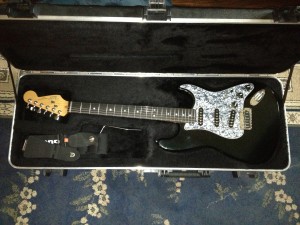 Last summer I had my main guitar refretted by Mike Lull, luthier extraordinaire. I had worn down the frets on my black Stratocaster to the point where it was pretty difficult to play. Mike did a beautiful job of refretting the guitar, and it made a world of difference in the playability of the instrument. I took the guitar back to him last week to have a quick adjustment made to the neck, and while I was there I asked him to remove the stock “roller nut” and replace it with a standard bone nut. The roller nut on this model strat is a source of rattling and vibration dampening. I should have had Mike do this replacement when he was working on the frets, but it didn’t occur to me.
Last summer I had my main guitar refretted by Mike Lull, luthier extraordinaire. I had worn down the frets on my black Stratocaster to the point where it was pretty difficult to play. Mike did a beautiful job of refretting the guitar, and it made a world of difference in the playability of the instrument. I took the guitar back to him last week to have a quick adjustment made to the neck, and while I was there I asked him to remove the stock “roller nut” and replace it with a standard bone nut. The roller nut on this model strat is a source of rattling and vibration dampening. I should have had Mike do this replacement when he was working on the frets, but it didn’t occur to me.
The overall difference since the nut replacement is very noticeable. The tone of the guitar is clearer, and I don’t hear that occasional rattle from the headstock. I also think it’s vibrating more cleanly, with less dissipation. I’ve only had a chance so far to use the guitar in a practice environment; the real test will be onstage this next weekend. I’m looking forward to hearing it in that context.
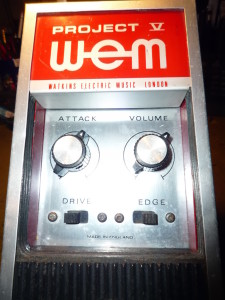 This coming Saturday, my band BowieVision is performing at Nectar in Seattle. We are working on a few new songs for this performance, including “Scary Monsters (and Super Creeps)”, from the Scary Monsters album. It’s another time I have to recreate the frenetic 1980s guitar sound of Robert Fripp. On this track, I believe he is using a Watkins Electric Music (WEM) Project V fuzz pedal, an extraordinarily rare guitar effect that he also used on the Brian Eno recordings of the same period. This pedal can produce a classic buzz-saw fuzz effect (think “Satisfaction” by the Stones) and also has a primitive bit-crusher effect that deconstructs the sound into almost a ring-modulation tone.
This coming Saturday, my band BowieVision is performing at Nectar in Seattle. We are working on a few new songs for this performance, including “Scary Monsters (and Super Creeps)”, from the Scary Monsters album. It’s another time I have to recreate the frenetic 1980s guitar sound of Robert Fripp. On this track, I believe he is using a Watkins Electric Music (WEM) Project V fuzz pedal, an extraordinarily rare guitar effect that he also used on the Brian Eno recordings of the same period. This pedal can produce a classic buzz-saw fuzz effect (think “Satisfaction” by the Stones) and also has a primitive bit-crusher effect that deconstructs the sound into almost a ring-modulation tone.
It’s an interesting challenge replicating this tone in the AxeFX. For the guitar parts in “Fashion”, I use a complex stacked tone with two separate effects chains, with dedicated amps and cabinets for each part of the overall tone. During the two solo sections I switch to separate scenes with additional gain and modulation intensities.
Without question, Robert Fripp’s guitar parts are the most challenging aspect of this band to recreate. His sound and playing is unique and idiomatic unto itself. I have listened to mister Fripp’s playing in many settings, and appreciate how he approaches music. It’s a fun puzzle to work out his parts and play them live. After our recent Triple Door performance, an audience member complimented me on having navigated those difficult solos in “Fashion” with an authentic tone. That really means a lot to me, since those parts total less sixty seconds of music and took several days to work out.
Well, it’s that time of the year… I’m taking a long look at my music rig(s) and pondering some significant changes. In the context of my bands I have the need for two basic configurations.
THE BIG RIG
This is the setup for multi-instruments (guitar, bass, Warr guitar) and for use on larger stages (Triple Door, Crocodile, Neumos, Showbox).
Requirements
- All components must fit on my cart for a single load into the club. Everything needs to be be small enough to fit inside my vehicle.
- Very reliable operation. All connections rated for repeated connect / disconnect cycles. All components road-rated.
- Full range, stereo sound on stage driven by solid-state amplification (preferably Class D).
- Easy and quick to set up. Components need to all fit is a compact rack. All interconnect cables need to be locking (Speakon, PowerCON, XLR for control cables).
- Very flexible signal routing and processing. I need to have separate banks of presets for The Dudley Manlove Quartet, BowieVision and other projects. I need to be able to stack multiple amp models with parallel routing.
- Plenty of control onstage. I need a well-organized foot pedal with expression controllers and programmability.
What I have in mind is a rig based around the Fractal Audio Axe FX, with the dedicated Fractal Audio foot controller. This will feed into a solid state power amp, into a pair of compact full-range speaker cabinets.
THE SMALL RIG
This will be the setup for guitar and baritone guitar, for performances where portability and size are considerations.
Requirements
- The effect pedalboard must be small enough to be carried onto a plane. Ideally it should fit into an Anvil briefcase.
- The amp must be at least 60 watts, capable of producing a loud clean tone, and should be solid state. The power amp section might be Class D for light weight. I don’t want to be dependent on the guitar amp for tone shaping, so I can use commonly backline / rented equipment on tour or at festivals. This would allow me to take only my small pedalboard and instrument for fly dates.
- The entire rig needs to be carryable for short distances in a single load without the use of a hand truck.
I’m thinking of using a Quilter Aviator amp, likely the 2×10 speaker configuration.
What this means is that I would likely overhaul my entire setup, and therefore sell pretty much everything I’m currently using. If this occurs I’ll be posting a long list of pedals, amps, instruments, cases, rack equipment, and so on. Stand by…
My existing live performance setup is very good. I use a combination of great instruments, boutique pedals, a central multi-effect unit and a fabulous tube amp. I’ve been very satisfied with the tone and versatility of my rig, but it has some factors that make it challenging:
- No presets for my boutique pedals. The only device in my system with any notion of “remembering” an effect setting is my Line6 M9. It does a great job of being the central nervous system of my pedalboard. Nothing else of my board has a preset mechanism, so making significant changes on the fly is limited.
- No computer-based editor for anything. I would love to have an editor / librarian system for my effects and preset management. Back when I had the Line6 Pod Pro, I used its GUI software on my laptop to manage presets. I sure miss that!
- Size and weight. My system is just about as small as I can make it, given my current requirements.
I have been considering the possibility of going to a fully modeled system, based around a central effect / amp modeling unit such as the Line6 Pod Pro HD X or the Fractal Audio Axe FXII. This would feed into a full-range flat response amplified speaker that would replace my tube amp. This type of setup would certainly address the issues I’ve outlined above, and it also gives me a single highly flexible system for guitar, bass and Warr guitar.
The challenge in this type of setup is selecting the appropriate modeler and foot controller, then completely recreating all of my tones. I have used Line6 equipment for over a decade and their newest lineup of gear is impressive; I’d say they have the front runner position based on my historic level of satisfaction with the company and their products. I have read a lot of testimonials from Axe FXII users and I’m impressed by what I’ve heard, but at 4x the price I’m uncertain of the value proposition. The next step in my investigation will involve some A/B testing. Stay tuned for details…
Welcome to the 2013 installment of my pedalboard evolution
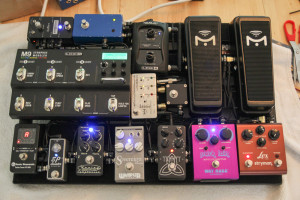
Apparently, May is the month each year when I completely tear down and rebuild my guitar pedalboard. I outlined last year’s rebuild in another article and it generated some interesting discussion with other musicians. For this year I decided to make a few strategic changes, with a some pedals sidelined and others called into action. Here’s an overhead shot of the 2013 version of my pedalboard. Note that everything is powered up, which is purely for photographic purposes… the actual sound with everything turned on is akin to the mating call of the Kraken.
Spring cleaning
I started this year’s rebuild with the ritual of removing everything from the board and completely cleaning the surface with alcohol. I keep my equipment fairly clean but there always seems to be “that one gig” when someone spills a beer onto my pedalboard. Fortunately cleaning and prep was a quick job this time. With that step completed I sorted my cables by length to reuse as many as possible. I use George L cable for my pedalboards and am happy with their performance, plus they are very simple to make or modify. Their right-angle connectors stick out about 1/2″ from the pedal housing, and my densely packed boards always have some places where two of those connectors meet. I play “pedalboard tetris” and arrange the pedals to minimize those plug-to-plug spacing requirements, but I usually have at least a few special cables that I have to solder up using “pancake” solder connectors to allow a closer fit.
Let’s meet the 2013 lineup
- Pedal Train 3 Pedalboard with flight case. I have been using the Pedal Train 3 for a few years now. At 16×24 inches it’s big enough to hold a reasonable assortment of pedals but it still compact. It’s built to last forever.
- VoodooLab Pedal Power Digital [Added for 2013 rebuild]. This is a high-current DC power supply for my all my pedals. I’ve been using a VoodooLab Pedal Power 2+ for years, but this year’s board rebuild required higher output for pedals like the Strymon Lex. This power supply does not have enough individual outputs for the number of pedals on my board, so I use a few splitters for the low-draw pedals, leaving dedicated feeds where necessary for power-hungry pedals.
- Empress Buffer + [Added for 2013 rebuild]. This is a nice patch point for input / output. It includes both a selectable boost and an output buffer to moderate signal loss on the return line to the amp.
- A/B Switch. This is one my pedals I built to give me a simple way to switch between my wired guitar signal and the wireless receiver. Nothing fancy inside this box… it’s just a 3PDT switch with a couple of LEDs and current-limiting resistors.
- Line6 G50 Receiver. Line6 makes three models of guitar wireless systems. I have been using the G50 for a few years now and it’s without question the best wireless system I’ve ever used. It has great range and a fantastic transparent tone with full dynamics.
- Mission Engineering VM-1 Volume Pedal. This pedal is in a wah-style housing and is a straight-forward volume pedal. I love the smooth travel and transparency of this volume control.
- Mission Engineering SP-1 Expression Pedal [Added for 2013 rebuild]. This pedal is also in a wah-style housing. It provides continuous control output for the both the M9 and the Strymon Lex, courtesy of the amazing magic in the Expressionator (see below). I use this as a wah controller as well. In addition to being a sweep-style controller, this pedal also has a switch in the toe position, allowing me to control other effect settings. A very clever and useful pedal all around.
- Line6 M9. The M9 is the nerve center of my pedalboard and provides a wide range of multi-effect settings. It’s especially handy for setting up the base configurations for my tones, which I can augment with outboard pedals.
- Mission Engineering Expressionator [Added for 2013 rebuild]. This pedal is pure magic. It allows you to connect a single controller (such as the Mission Control SP-1) as an input, and then simultaneously route the controller information to three separate outputs. This means I can send control information to the Strymon Lex and the Line6 M9 at the same time, and still have another output available for future use. The sweep / taper can be set for each output, and the pedal has internal memory for saving presets.
- Modulation Controller. I built a simple on / off modulation controller in a tiny housing, to control expression input #1 on the M9. This allows me to have 2 settings for effects and switch between them without changing presets. For example, I have the delay mix and regeneration set fairly low as the default, but stomping the switch sets them to a higher level. The pedal itself is just a 3PDT switch, LED + current limiting resistor, and is wired to short the tip / sleeve (in one switch position) or connect via a 10K resistor (in the other switch position). The M9 perceives those inputs as MIN and MAX settings from a controller.
- Sonic Research ST-200 Turbo Tuner. There is a tuner in the M9, but I prefer the Sonic Research ST-200. It’s bright, easy to read, and on my pedalboard is always on.
- Xotic Effect EP Booster. This pedal mimics the tonal characteristics of an Echoplex EP-3 preamp section. Eddie Van Halen, Jimmy Page and Eric Johnson all use an EP-3 inline as part of their signal chain. This pedal is always turned on. It also has a boost, which I typically don’t use.
- Keeley 4 Knob Compressor. Robert Keeley makes beautiful guitar effects. This compressor is clean and transparent. I only use it for big strat tones, to evoke Stevie Ray Vaughan or David Gilmour. My version of this pedal happens to be a rare all-black variant. Not that I’m into black or anything.
- Wampler Sovereign Distortion [Added for 2013 rebuild]. I always need to have a “Marshall on ten” sound. This pedal has a huge gain range and delivers a full tone for those big rock songs. It’s only available from “a certain nationwide guitar chain” so you’ll need to go in or order it online. This is a damned fine distortion pedal. Wampler makes great gear.
- TC Electronic Trinity Reverb. TC Electronic makes beautiful equipment. This reverb pedal is a winner. It is a variant on the “Hall of Fame” reverb pedal, and includes a few extra preset models only available in the “Trinity”. You will have purchase this one from Pro Guitar Shop in Portland, Oregon. This is my favorite guitar store and is a joy to visit; they also have a fantastic web site with demo videos.
- Way Huge Pork Loin. First of all, it’s just really fun to say “Way Huge Pork Loin”. It’s somewhat based on the Tube Screamer tone, but has a much warmer sound with better clarity. I use this pedal to get some of my gritty blues / rock tones, and occasionally stack it with the Wampler Sovereign for solos.
- Strymon Lex [Added for 2013 rebuild]. Strymon makes stunning pedals. This is their “Leslie in a box” pedal, and I don’t know how they did it so convincingly. This is my favorite modulation effect. If you hear me play live you may notice that I use this effect quite a bit. I control the rotation speed via the Mission SP-1.
Signal chain
The signal chain (order) is :
Guitar->Empress Buffer+ -> Xotic Effects EP Booster -> Keeley Compressor -> Way Huge Pork Loin -> Wampler Sovereign-> Strymon Lex -> Line6 M9 -> TC Electronic Trinity -> Mission Engineering VM-1 -> Empress Buffer+ -> Amp
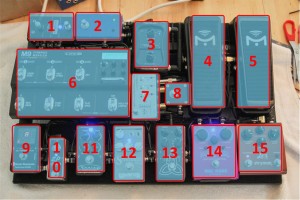
Here’s another shot of the top of the board with the pedals identified.
- Empress Buffer +
- A/B Switch
- Line6 G50 Receiver
- Mission Engineering VM-1 Volume Pedal
- Mission Engineering SP-1 Expression Pedal
- Line6 M9
- Mission Engineering Expressionator
- Modulation Controller
- Sonic Research ST-200 Turbo Tuner
- Xotic Effecst EP Booster
- Keeley 4 Knob Compressor
- Wampler Sovereign
- TC Electronic Trinity Reverb
- Way Huge Pork Loin
- Strymon Lex
Recommendations
For pedals that I build myself, I’ll make a big recommendation to Pedal Parts Plus. They stock a wide variety of pedal enclosures, switches, LEDs, and other parts. They offer drilling, custom painting and screen printing services for a custom professional finish. I’ve been ordering from them for years and have always been delighted with their service and support. Pedalboard configurations for my customers often include enclosures that I’ve purchased from Pedal Parts Plus.
I have a few items on my 2013 board from Mission Engineering. They produce high-quality equipment designed to survive the rigors of touring and are always coming up with new clever gizmos.
When you’re working out the initial layout for a pedalboard, there’s a handy online tool called Pedalboard Planner. It’s designed to help you arrange your pedals on one of the Pedal Train boards. If you are using another brand of pedalboard you can still use this tool as long as you know the dimensions of your board; just choose the next biggest platform and use their ruler tool to define the working space. Also, this tool does not show you the required clearance for plugs so expect to leave at least 1/2″ clearance for jacks.
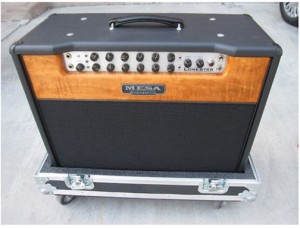 On Saturday 9/15 the Dudley Manlove Quartet performed at a private event in Seattle. We arrived on time and loaded in for sound check. When I picked up my trusty Boogie Lonestar to set it up, I noticed the 5U4 rectifier tube wasn’t seated in its socket, so I pushed it back in. Then I set up my equipment, including the Furman power conditioner and plugged in the amp. And powered up. And nothing happened. Few things in this world match the sickening feeling of turning on a piece of equipment and having it not function. I pulled out the fuse and verified it was blown; in fact, the fuse was blackened inside indicating a high voltage failure. Egad… after the previous bout of amp woes I was wondering if I was cursed!
On Saturday 9/15 the Dudley Manlove Quartet performed at a private event in Seattle. We arrived on time and loaded in for sound check. When I picked up my trusty Boogie Lonestar to set it up, I noticed the 5U4 rectifier tube wasn’t seated in its socket, so I pushed it back in. Then I set up my equipment, including the Furman power conditioner and plugged in the amp. And powered up. And nothing happened. Few things in this world match the sickening feeling of turning on a piece of equipment and having it not function. I pulled out the fuse and verified it was blown; in fact, the fuse was blackened inside indicating a high voltage failure. Egad… after the previous bout of amp woes I was wondering if I was cursed!
Rather than attempting to troubleshoot the amp further I made an emergency phone call to my wife, who saved me by bringing me my backup amp. Yes, I realize that’s above and beyond the call of duty. I expect that I owe her a tropical vacation for this heroism.
The gig went great and we had a lot of fun. Once the gig was over I had the opportunity to delve a little further into the Lonestar situation. What I discovered was the 5U4 Rectifier tube had come loose and broken off its orientation key, so when I reinstalled it I must have accidentally inserted incorrectly. The pins were in the wrong holes in the socket, and the fuse immediately blew. What makes this especially odd is that this amplifier has both solid state and tube rectifiers, and you can switch between them based on the amp’s output setting; if you have the amp in 50w mode you can selected either the solid state or tube rectifier, and in the 100w mode it’s solid state only. I always have the amp in 100w mode for maximum headroom, but apparently even when the switch is set for solid state rectification the 5U4 tube is receiving power from the input transformer. So the incorrect orientation of the pins cascaded a failure and the fuse blew. My amp technician strongly recommends using the amp without that tube in place at all (!) which seems odd to me. I’m considering the possibility of replacing it with an octal-base solid state rectifier just in case the amp gets set in 50w mode at some point. Given that I had just replaced all four of the power tubes, having the rectifier also give me trouble was frustrating. But at this point I’ve got the full complement of power section tubes replaced and all should be good.
I swear, I better not have any amp problems anytime soon. It makes for a some grumpy moments.
 On Friday 8/24 the Dudley Manlove Quartet performed in Bothell for one of their free public concerts in the park. I love these opportunities for us to play outdoors and it’s always fun to get exposed to new audiences. We played the usual assortment of crowd-pleasing hits, despite having to set up on the infield dirt of a softball diamond… why oh why did they put us there? Oh well. We happily played and had people dancing in the grass.
On Friday 8/24 the Dudley Manlove Quartet performed in Bothell for one of their free public concerts in the park. I love these opportunities for us to play outdoors and it’s always fun to get exposed to new audiences. We played the usual assortment of crowd-pleasing hits, despite having to set up on the infield dirt of a softball diamond… why oh why did they put us there? Oh well. We happily played and had people dancing in the grass.
During our third set my amp suddenly started to make an odd distortion and the output dropped. I turned around just in time to see the pilot light go out, indicating the fuse had blown. With no spare fuse or amp in sight, I had to wave over the monitor operator and have him patch the output of my pedalboard directly to a DI. I’m told it sounded surprisingly good, but it wasn’t nearly as good as my amp.
The next day I had a chance to get the amp to my tech who diagnosed the issue pretty quickly. First off, it’s partially my own fault. I bought the amp used about a year ago, and while I intended to retube it “real soon” I never got around to it. The original owner had installed mismatched power tubes in the amp, which is a really big no-no in a Mesa Boogie amp because they don’t have a bias control. Three of the four 6L6 power tubes were Boogie tubes, and the fourth was a Ruby tube. Naturally it was going to cause a failure eventually, and it did! I replaced the four power tubes and had my tech check the amp out. No worries. Back in fighting shape again, and sounding MUCH better since the power tube section was properly balanced. I definitely should have checked out those tubes on day 1 and recognized this was a potential problem. It also made me wonder if I should always have an alternate output strategy, like carrying a good quality DI just case something like this happens again.
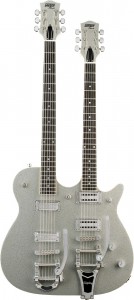 In the 1 Uppers I frequently switch between my stratocaster and my Danelectro baritone guitar. Our set lists seem to always be perfectly arranged to maximize the number of times I have to switch 🙂 After a recent gig at the newly opened Royal Room, I was lamenting the inconvenience of the repeated switching. I said (half jokingly) that I really needed a double neck guitar that had both a baritone and a regular neck. One of my bandmates immediately pointed out that Gretsch actually makes such an instrument. I did some hunting online and discovered the Guitar Center in Little Rock, Arkansas had one in stock that was used, with a very attractive price! After a few calls to the store I decided to have them ship it over to Seattle so I could give it a whirl.
In the 1 Uppers I frequently switch between my stratocaster and my Danelectro baritone guitar. Our set lists seem to always be perfectly arranged to maximize the number of times I have to switch 🙂 After a recent gig at the newly opened Royal Room, I was lamenting the inconvenience of the repeated switching. I said (half jokingly) that I really needed a double neck guitar that had both a baritone and a regular neck. One of my bandmates immediately pointed out that Gretsch actually makes such an instrument. I did some hunting online and discovered the Guitar Center in Little Rock, Arkansas had one in stock that was used, with a very attractive price! After a few calls to the store I decided to have them ship it over to Seattle so I could give it a whirl.
It’s likely I’ll bring it along with me to the New Year’s Eve show at The Sunset, just because it seems like a perfect opportunity to try it out on stage. The overall tone is classic Gretsch, and you just gotta love that silver sparkle finish with the TWO Bigsby tremolo bridges! It’s pretty heavy so I don’t see myself playing marathon gigs with it, but I love its visual vibe. This will be a fun addition to the guitar arsenal!
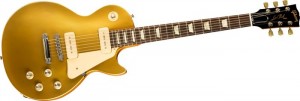 On Friday 11/18 the 1 Uppers performed at Slim’s Last Chance Chili Shack in Seattle. This venue is one of my favorite places on our regular circuit. It’s a cozy room that gives off the perfect vibe of great music, cold beer and yummy chili.
On Friday 11/18 the 1 Uppers performed at Slim’s Last Chance Chili Shack in Seattle. This venue is one of my favorite places on our regular circuit. It’s a cozy room that gives off the perfect vibe of great music, cold beer and yummy chili.
I’ve been playing a lot of shows with the Dudley Manlove Quartet lately, and my bandmates in the 1 Uppers are gracious in allowing me to balance my time between the bands. So it has been over a month since we had the band in full force, and at this gig we worked with substitute drummer Andy Roth. At our rehearsal Thursday evening it was evident that we were ready to attack this show with a lot of energy, and I had a feeling it was going to be a good one. Andy (drums) was perfectly prepared for this set, the mark of a pro player!
At rehearsal on Thursday the songs were perfectly arranged (not by me) to group the songs where I play baritone guitar all together. This meant only one switch between baritone and regular guitar during the rehearsal set. Naturally, at the gig we move a few songs around which meant switching four times! Good thing I can move fast. The set was great. You can tell when it’s going well onstage, and there was a fun relaxed vibe as tore through the songs. The set concluded with the audience demanding an encore, which we’re happy to do… just unusual to have such energetic reception. Another fun night with great friends. I look forward to the next one!
 On Sunday 10/9 the 1 Uppers performed at the Sunset Tavern in Ballard. This venue feels like home to me, given the large number of regular performances I have there with the Dudley Manlove Quartet. This was another very enjoyable show with the 1 Uppers, and we’re continuing to develop our musical communication onstage.
On Sunday 10/9 the 1 Uppers performed at the Sunset Tavern in Ballard. This venue feels like home to me, given the large number of regular performances I have there with the Dudley Manlove Quartet. This was another very enjoyable show with the 1 Uppers, and we’re continuing to develop our musical communication onstage.
When I play at the Sunset with DMQ, I’m over on stage left which means I’m standing more or less behind the PA mains in a dark corner of the stage. I do jump out and stand on the subwoofer for big solos, but most of the time I’m pretty tightly tucked back into that corner. With the 1 Uppers I tend to be on stage right, standing behind Jon Hyde on pedal steel. So this gave me a nice open area in which to play. Always good to have a little room to roam 🙂
The show was part of a triple bill. Fortunately we were on first and it meant that we could get a soundcheck – AND it meant we were done at a mercifully early hour. Our set consisted of mostly originals with a few selected covers. For this show I brought a pretty lightweight rig, consisting of the Fender Hot Rod Deluxe and my micro-pedalboard (Line6 M9 + Ernie Ball volume pedal). I’m working on putting together a new pedalboard base for those two items, which should be small enough to fit into an Anvil briefcase. It’ll make an easy rig for fly dates. During the course of the show I switched guitars several times between regular electric guitar to baritone guitar. I’m finding that playing baritone guitar is a great experience and clears some space in the mix where the other guitars reside. The 1 Uppers have a number of gigs coming up in the next month and I think it’ll be great for our sound. Always a delight playing music with great friends!
 Last summer I had my main guitar refretted by Mike Lull, luthier extraordinaire. I had worn down the frets on my black Stratocaster to the point where it was pretty difficult to play. Mike did a beautiful job of refretting the guitar, and it made a world of difference in the playability of the instrument. I took the guitar back to him last week to have a quick adjustment made to the neck, and while I was there I asked him to remove the stock “roller nut” and replace it with a standard bone nut. The roller nut on this model strat is a source of rattling and vibration dampening. I should have had Mike do this replacement when he was working on the frets, but it didn’t occur to me.
Last summer I had my main guitar refretted by Mike Lull, luthier extraordinaire. I had worn down the frets on my black Stratocaster to the point where it was pretty difficult to play. Mike did a beautiful job of refretting the guitar, and it made a world of difference in the playability of the instrument. I took the guitar back to him last week to have a quick adjustment made to the neck, and while I was there I asked him to remove the stock “roller nut” and replace it with a standard bone nut. The roller nut on this model strat is a source of rattling and vibration dampening. I should have had Mike do this replacement when he was working on the frets, but it didn’t occur to me.





